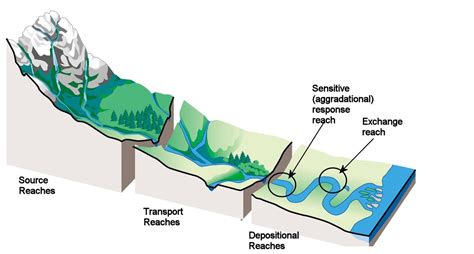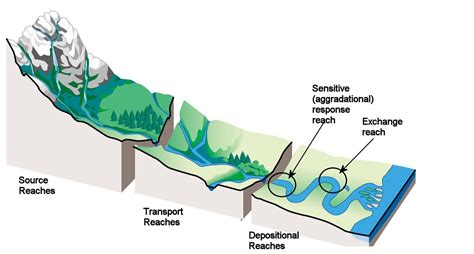chanel river | different types of river channels chanel river The Channel River was a prehistoric river flowing between England and France during periods of low sea level during the ice ages. Its tributaries included the river Rhine in modern-day Netherlands, the River Thames in modern-day England and other rivers. Over the last 12,000 years rising seas have covered . See more Rolex: $7,450. Best Affordable Field Watch. Rolex Explorer 40. Read More. Rolex: $7,700. Best Affordable Dress Watch. Rolex Datejust 36. Read More. Rolex: .
0 · types of river channels
1 · river channel patterns
2 · river channel morphology
3 · main channel of a river
4 · different types of river channels
5 · deepest channel in a river
6 · channel river meaning
7 · channel river definition
Description. Correze Leather 4 Piece Dual Power Recline Sectional with LAF Chaise from Signature Design. Sectional includes LAF Dual Power recline chaise, Armless chair, storage console and RAF Dual Power .
The Channel River was a prehistoric river flowing between England and France during periods of low sea level during the ice ages. Its tributaries included the river Rhine in modern-day Netherlands, the River Thames in modern-day England and other rivers. Over the last 12,000 years rising seas have covered . See morePaleogeographers studying the Quaternary period have suggested that 600,000 years ago, although the Channel and the See more• Geology of the southern North Sea See moreUnfortunately erosion along the coastline made it difficult to analyse sedimentary deposits, and to get a clear picture of what happened so long ago. This is why a team of Anglo-French . See more
• River Rhine and Channel River response to late quaternary allogenic forcing: The importance of tectonic setting See moreIn physical geography and hydrology, a channel is a landform on which a relatively narrow body of water is situated, such as a river, river delta or strait. While channel typically refers to a natural formation, the cognate term canal denotes a similar artificial structure. Channels are important for the functionality of ports and other bodies of water u.
The deepest part of a river bed is called a channel. The channel is usually located in the middle of a river. Here, the current is often strong. In large rivers, ships travel in channels. Engineers may dredge, or dig, deeper . A shady hiking and biking trail leads north along the riverbank for about a quarter-mile through a eucalyptus grove. As you approach the Highway 87–Interstate 280 junction, the .The English Channel, [a][1] also known as the Channel, is an arm of the Atlantic Ocean that separates Southern England from northern France. It links to the southern part of the North Sea by the Strait of Dover at its northeastern end. It . First, there is the river that forms its channel, its watercourse, by means of erosion of the earth’s surface. Rivers concentrate the flow of water from rain or from melting snow or .
Figures 5-17 and 5-18 are simplified flow-transverse cross sections through a representative single-channel alluvial river of medium to large size. Figure 5-17 shows the . River, (ultimately from Latin ripa, “bank”), any natural stream of water that flows in a channel with defined banks . Modern usage includes rivers that are multichanneled, . The Channel River. The floor of the English Channel (La Manche), the seaway between England and France, is characterised by a network of sediment-filled and unfilled .The Channel River was a prehistoric river flowing between England and France during periods of low sea level during the ice ages. Its tributaries included the river Rhine in modern-day Netherlands, the River Thames in modern-day England and other rivers.
In physical geography and hydrology, a channel is a landform on which a relatively narrow body of water is situated, such as a river, river delta or strait. While channel typically refers to a natural formation, the cognate term canal denotes a similar artificial structure.
types of river channels

river channel patterns
The deepest part of a river bed is called a channel. The channel is usually located in the middle of a river. Here, the current is often strong. In large rivers, ships travel in channels. Engineers may dredge, or dig, deeper channels so more water can flow through the river or the river can transport larger ships. English Channel, narrow arm of the Atlantic Ocean separating the southern coast of England from the northern coast of France and tapering eastward to its junction with the North Sea at the Strait of Dover. Its location has given it immense significance over the centuries.

A shady hiking and biking trail leads north along the riverbank for about a quarter-mile through a eucalyptus grove. As you approach the Highway 87–Interstate 280 junction, the river enters a constricted channel that also marks the river trail’s unofficial entrance to downtown.
The English Channel, [a][1] also known as the Channel, is an arm of the Atlantic Ocean that separates Southern England from northern France. It links to the southern part of the North Sea by the Strait of Dover at its northeastern end. It is the busiest shipping area in the world. [2] First, there is the river that forms its channel, its watercourse, by means of erosion of the earth’s surface. Rivers concentrate the flow of water from rain or from melting snow or ice and this flow is a force, a source of energy, which can excavate the soil or even carve its way into bedrock, forming the channel. Figures 5-17 and 5-18 are simplified flow-transverse cross sections through a representative single-channel alluvial river of medium to large size. Figure 5-17 shows the entire stream valley, and Figure 5-18 shows details of the river channel itself.
River, (ultimately from Latin ripa, “bank”), any natural stream of water that flows in a channel with defined banks . Modern usage includes rivers that are multichanneled, intermittent, or ephemeral in flow and channels that are practically bankless. The Channel River. The floor of the English Channel (La Manche), the seaway between England and France, is characterised by a network of sediment-filled and unfilled palaeochannels, which are generally referred to as the Channel River (Fleuve Manche, Fig. 1 ).The Channel River was a prehistoric river flowing between England and France during periods of low sea level during the ice ages. Its tributaries included the river Rhine in modern-day Netherlands, the River Thames in modern-day England and other rivers.
In physical geography and hydrology, a channel is a landform on which a relatively narrow body of water is situated, such as a river, river delta or strait. While channel typically refers to a natural formation, the cognate term canal denotes a similar artificial structure. The deepest part of a river bed is called a channel. The channel is usually located in the middle of a river. Here, the current is often strong. In large rivers, ships travel in channels. Engineers may dredge, or dig, deeper channels so more water can flow through the river or the river can transport larger ships. English Channel, narrow arm of the Atlantic Ocean separating the southern coast of England from the northern coast of France and tapering eastward to its junction with the North Sea at the Strait of Dover. Its location has given it immense significance over the centuries.
A shady hiking and biking trail leads north along the riverbank for about a quarter-mile through a eucalyptus grove. As you approach the Highway 87–Interstate 280 junction, the river enters a constricted channel that also marks the river trail’s unofficial entrance to downtown.The English Channel, [a][1] also known as the Channel, is an arm of the Atlantic Ocean that separates Southern England from northern France. It links to the southern part of the North Sea by the Strait of Dover at its northeastern end. It is the busiest shipping area in the world. [2] First, there is the river that forms its channel, its watercourse, by means of erosion of the earth’s surface. Rivers concentrate the flow of water from rain or from melting snow or ice and this flow is a force, a source of energy, which can excavate the soil or even carve its way into bedrock, forming the channel. Figures 5-17 and 5-18 are simplified flow-transverse cross sections through a representative single-channel alluvial river of medium to large size. Figure 5-17 shows the entire stream valley, and Figure 5-18 shows details of the river channel itself.
River, (ultimately from Latin ripa, “bank”), any natural stream of water that flows in a channel with defined banks . Modern usage includes rivers that are multichanneled, intermittent, or ephemeral in flow and channels that are practically bankless.

river channel morphology

perfumy damskie versace dylan blue
Shop our air king rolex 1970s selection from top sellers and makers around the world. Global shipping available.
chanel river|different types of river channels


























